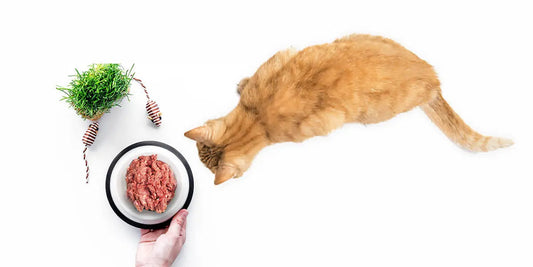
Are You Feeding Your Dog Offal?
Written by Darwin's
Why The Answer Should Be Yes! Oxtail. Sweet breads. Liver. Organ meats, long-ago considered a mealtime staple, are recently enjoying a comeback on the white-tablecloth restaurant scene. It was only a matter of time before dog dishes were next. And that time is now—with good reason!
What Is Offal, Anyway?
Offal, also known as organ meats or variety meats, the literal definition of offal is to “fall off”—that is, whatever falls off the skeleton during the butchering process. This includes internal organs such as the heart, liver, lungs, brain, tongue, bone marrow, tripe, blood, kidneys, and the spleen. It also includes entrails, such as muscles, ears, eyes, tails, feet, and bone. The origin of meat varies from ruminate animals like cow, pig and lamb, or fowl from duck or chicken.
While the word “offal” is actually synonymous with the word “trash” or “rubbish” in certain cultures, it’s proof that one person’s “trash” is another’s delicacy. While offal is more recently becoming recognized as a culinary delight in the West, it’s hardly new—and dogs knew this along. Think about wild dogs: Do they gently pick apart the meat, daintily avoiding the heart and liver? Hardly! They tuck in to the entire carcass. So doesn’t it make sense that your pet might enjoy offal—and benefit from it?
A Nutritional Treasure Trove
Wild dogs aren’t wolfing down offal in order to keep up their vitamin and mineral counts? It turns out to be exactly that: offal is a nutritional treasure trove. A hearty source of nutrients like B-complex vitamins, vitamins E, D and K2, amino acids, iron, and trace minerals like copper, chromium, and zinc, offal is proving to be a nearly one-stop shop for your dog’s nutritional needs.
But remember, while offal is nutritious, it's important to feed it in the right amounts. For guidance on how much to feed your dog, especially when including rich foods like organ meats, check out our detailed feeding chart to ensure a balanced diet. To show you how nutritional offal can be, let’s take a look at the top three organ meats—and their benefits—that you might consider adding to your dog’s nightly routine:
Liver
Liver is the biggest winner when it comes to packing a nutritional punch. Not only does it rank high in protein, coming in at a 20 grams per serving, it’s also a great source of copper, folic acid, and iron. Thanks to its Coenzyme Q10 (CoQ10), liver has a cardiovascular benefit—it improves endurance and strength, and has a somewhat magical “fatigue-fighting” effect.
Kidneys
Packing in a lot of protein without the extra fat, kidneys are also high in B12, riboflavin, and iron, and also contain B6, folate, and niacin.
Heart
Heart contains amino acids and a high amount of protein, thiamine, folate, selenium, phosphorus and zinc—a combination proven to build muscle and stamina, improve metabolism, and provide an anti-aging effect (sign us up!).


